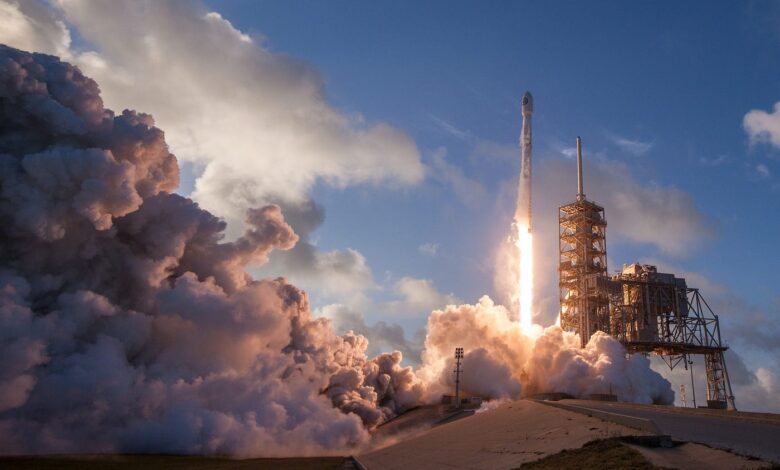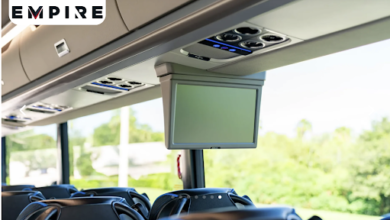The Future of Space Travel: From Elite Adventure to Everyday Reality

Space travel stands at the threshold of a remarkable transformation. What began as the exclusive domain of government astronauts and billionaire adventurers is rapidly evolving into an accessible frontier for ordinary people with extraordinary dreams. The developments we’re witnessing today aren’t just incremental improvements—they represent fundamental shifts that will reshape how humanity views and accesses space.
The convergence of advancing technology, decreasing costs, and growing commercial infrastructure suggests we’re approaching a tipping point. Within the next two decades, space travel could transition from an exclusive luxury to a genuine option for middle-class adventurers, much like international air travel evolved throughout the 20th century. For those considering their first journey beyond Earth’s atmosphere, understanding orbital tourism destinations and space travel preparation requirements provides essential insight into this emerging industry.
The Current Landscape: Building Foundations for Tomorrow
Today’s space tourism industry operates primarily through three distinct pathways: suborbital flights offering brief weightless experiences, orbital journeys to existing space stations, and the emerging prospect of lunar expeditions. Each pathway serves different interests and budgets while contributing to the broader infrastructure needed for mass space travel.
Suborbital tourism has achieved remarkable success, with companies like Blue Origin and Virgin Galactic regularly flying paying customers to the edge of space. These flights, lasting roughly 90 minutes with several minutes of weightlessness, provide passengers with the profound “overview effect”—the transformative experience of seeing Earth from space. While tickets currently cost hundreds of thousands of pounds, the frequency of flights and operational experience gained with each mission drives down costs and improves safety protocols.
Orbital tourism represents a more significant commitment, with stays lasting several days to weeks aboard operational space stations. These experiences offer complete immersion in space environments, including extended periods of weightlessness, participation in scientific experiments, and unparalleled views of Earth. The complexity and duration of orbital missions currently place them at the premium end of space tourism, but they provide invaluable data about long-duration human spaceflight.
The infrastructure supporting these activities continues expanding rapidly. Private space stations are under development, reusable rocket technology has proven economically viable, and ground-based training facilities are becoming more sophisticated. Each component contributes to a growing ecosystem that makes space travel more routine and affordable.
Technological Revolutions Driving Change
The most significant factor enabling widespread space travel is the dramatic reduction in launch costs achieved through reusable rocket technology. SpaceX’s Falcon 9 system has demonstrated that rockets can be recovered, refurbished, and flown multiple times, reducing launch costs by an order of magnitude compared to traditional expendable systems. This breakthrough has inspired competitors worldwide to develop their own reusable systems, creating a competitive environment that drives further cost reductions.
Advanced materials science has produced lighter, stronger spacecraft components that require less fuel to reach orbit. Carbon fibre composites, advanced ceramics, and new metal alloys allow designers to create vehicles that are both safer and more efficient than their predecessors. These materials also enable larger passenger compartments and improved life support systems, making space travel more comfortable for civilians.
Propulsion technology continues advancing beyond chemical rockets. Electric propulsion systems, though currently too slow for human transport, excel at moving cargo efficiently through space. This capability allows for pre-positioning of supplies and equipment, reducing the payload requirements for crewed missions. Ion drives and plasma propulsion systems show promise for future interplanetary travel, potentially reducing journey times to Mars from nine months to three or four months.
Life support systems have become remarkably sophisticated, incorporating closed-loop recycling for air and water that approaches 95% efficiency. These systems, originally developed for the International Space Station, are being miniaturised and improved for commercial spacecraft. Advanced carbon dioxide scrubbers, water recovery systems, and oxygen generation equipment ensure that space travellers can survive comfortably for extended periods without resupply from Earth.
Navigation and communication systems now provide constant connectivity between spacecraft and Earth. High-speed data links allow real-time communication with family and colleagues, making space travel less isolating than early missions. GPS-like systems for space navigation improve safety and enable precise rendezvous manoeuvres between spacecraft.
The Economics of Accessible Space Travel
The fundamental economics of space travel are shifting in ways that suggest dramatic price reductions over the coming decades. Manufacturing scales typically drive costs down as production volumes increase, and spacecraft production is beginning to exhibit these characteristics. As companies build more vehicles and fly more missions, the per-flight costs decrease substantially.
Competition between space tourism providers creates downward pressure on prices while spurring innovation. Multiple companies now offer or plan to offer similar services, forcing each to differentiate through price, safety, or experience quality. This competitive environment benefits consumers and accelerates technological development across the industry.
The development of space-based manufacturing and resource extraction could fundamentally alter the economics of space travel. Asteroid mining, though still in early development phases, offers access to rare earth elements and precious metals worth trillions of pounds. The establishment of profitable space-based industries would create regular cargo traffic to and from Earth, making passenger travel a secondary revenue stream that could be offered at much lower costs.
Space hotels and orbital manufacturing facilities require regular crew rotations and supply missions, creating routine flight schedules similar to commercial aviation. This operational tempo allows for better utilisation of spacecraft and ground facilities, spreading fixed costs across more missions and reducing the per-passenger expense.
Financial models for space travel are evolving beyond simple cash transactions. Space tourism companies are exploring subscription models, group bookings, and experience packages that make the cost more manageable for middle-class customers. Corporate team-building experiences and educational programmes create new markets that can support larger flight frequencies.
Safety Standards and Regulatory Frameworks
Safety remains the paramount concern for widespread space travel adoption. The space tourism industry has learned from decades of government space programmes while developing new safety protocols specifically for civilian passengers. Modern spacecraft incorporate multiple redundant systems, abort capabilities throughout the flight profile, and extensive pre-flight testing regimens.
Regulatory frameworks are evolving to balance safety requirements with commercial innovation. Aviation authorities worldwide are developing space tourism regulations that protect passengers while allowing companies to develop new technologies and procedures. These regulations cover pilot training, vehicle certification, passenger preparation, and emergency response protocols.
Medical screening for space tourists has become more sophisticated while remaining accessible to people with common health conditions. Understanding of how space environments affect human physiology has improved dramatically, allowing medical professionals to prepare passengers more effectively and identify those who might face complications.
Training programmes for space tourists have standardised around essential safety knowledge while becoming more efficient and enjoyable. Modern preparation includes centrifuge training for g-forces, neutral buoyancy exercises for weightlessness familiarisation, and comprehensive briefings on spacecraft systems and emergency procedures.
Infrastructure Development: The Space Economy Takes Shape
The infrastructure required for mass space travel extends far beyond launch vehicles and spacecraft. Ground facilities, orbital stations, and support systems are expanding rapidly to accommodate growing demand and enable more complex missions.
Commercial space stations represent the next major infrastructure milestone. Several companies are developing orbital facilities specifically designed for tourism, research, and manufacturing. These stations will offer more comfortable accommodations than current government facilities, with larger viewing areas, private quarters, and recreational facilities designed for civilian visitors.
Spaceports are being developed worldwide to serve regional markets and reduce travel distances for space tourists. These facilities incorporate advanced weather monitoring, rapid turnaround capabilities, and passenger amenities similar to modern airports. The geographic distribution of spaceports makes space travel more convenient for customers and provides backup options for weather-related delays.
Manufacturing facilities in space are beginning to produce materials and products that cannot be created in Earth’s gravity. These operations create economic incentives for regular cargo flights and establish permanent human presence in space. As these facilities expand, they require larger crews and more frequent rotations, normalising human spaceflight operations.
Communication networks in space are becoming more robust and capable of supporting large numbers of simultaneous users. Satellite constellations provide global coverage for spacecraft communications, while deep space communication systems enable contact with missions travelling to the Moon and beyond.
The Psychological and Cultural Shift
Perhaps the most significant change enabling widespread space travel is the cultural shift in how society views space access. The success of private space companies has demonstrated that space travel is not inherently limited to government programmes or impossibly wealthy individuals. Public perception has shifted from viewing space as an elite playground to recognising it as an emerging frontier accessible to determined individuals.
The overview effect—the cognitive shift experienced when viewing Earth from space—has become widely recognised as a transformative experience worth pursuing. Astronauts consistently report that seeing Earth from space provides profound perspective on humanity’s interconnectedness and the planet’s fragility. This psychological benefit adds value beyond the adventure aspect of space travel.
Social media and improved documentation capabilities allow space travellers to share their experiences more effectively than ever before. High-quality video and photography from space missions inspire others to consider their own space journeys while building public support for continued space development.
Educational institutions are incorporating space science and technology into curricula at all levels, creating generations of students who view space travel as a normal part of human activity rather than science fiction. This cultural preparation ensures continued demand for space experiences and support for the necessary infrastructure development.
Destinations Beyond Earth Orbit
The future of space travel extends well beyond Earth orbit to destinations that seemed impossible just decades ago. Lunar tourism is progressing from concept to operational planning, with several companies developing spacecraft and surface infrastructure specifically for civilian visitors.
The Moon offers unique experiences impossible to replicate elsewhere: one-sixth gravity allowing for extraordinary mobility, views of Earth from 384,400 kilometres away, and opportunities to visit historic Apollo landing sites. Lunar day-night cycles lasting two weeks each create dramatically different experiences depending on the timing of visits.
Mars presents the ultimate destination for space tourism, though current technology limits such journeys to the most adventurous and well-prepared travellers. Advances in propulsion technology and closed-loop life support systems are gradually making Mars tourism feasible for civilians willing to commit to journeys lasting several years.
Asteroid visits offer another category of space destination, providing access to unique environments and potentially valuable resources. While technically challenging, asteroid missions could become routine as space-based mining operations develop and require regular crew rotations.
Preparing for Personal Space Travel
The democratisation of space travel requires individuals to take active roles in preparing for their journeys. Physical preparation has become more standardised and accessible, with many exercises and training activities available at conventional gyms and training facilities.
Understanding spacecraft systems and safety procedures has become essential knowledge for space tourists. Modern training programmes provide this information through interactive simulations and hands-on experience with actual spacecraft components. The complexity of this training continues decreasing as spacecraft become more automated and user-friendly.
Financial planning for space travel increasingly resembles planning for other major life experiences. Space tourism companies offer various payment plans and booking options that make the costs more manageable for middle-class customers. Early booking discounts and group rates provide additional opportunities to reduce expenses.
Looking Forward: The Next Decade of Space Tourism
The next ten years will likely see space tourism transition from a luxury experience to a genuine travel option for determined individuals with moderate means. Costs will continue declining while safety records improve and destinations expand beyond Earth orbit.
Regular passenger flights to orbital hotels will become routine, offering week-long stays in space for costs comparable to luxury Earth-based holidays. Suborbital tourism will achieve airline-like operational frequency, with multiple daily flights from various spaceports worldwide.
The first civilian Moon landings will capture global attention and inspire new generations of space travellers. These missions will demonstrate that lunar tourism is achievable and establish the infrastructure needed for regular Moon visits.
Space manufacturing and resource extraction will create new economic opportunities in space, supporting larger permanent populations and making passenger transport a routine part of space operations. This industrial development will drive down costs and improve the reliability of space transportation systems.
The transformation of space travel from elite adventure to accessible reality represents one of the most significant developments in human transportation since the advent of aviation. The technological, economic, and cultural foundations for this transformation are already in place and strengthening rapidly.
For individuals considering their own space journey, the future offers unprecedented opportunities to experience the wonder and perspective that comes with leaving Earth behind. The question is no longer whether ordinary people will travel to space regularly, but rather when each person will choose to take that extraordinary step beyond our planet’s atmosphere.
The cosmos awaits, and the pathway to reach it becomes clearer and more accessible each day. As Ciaran Connolly, founder of Space Voyage Ventures, observes: “Space exploration represents humanity’s greatest adventure, and we’re now at the point where that adventure is transitioning from the exclusive domain of professional astronauts to an experience available to anyone with sufficient determination and preparation.”
The future of space travel is bright, accessible, and closer than ever before. The only remaining question is not whether you can go to space, but when you will choose to begin your own journey to the stars.




